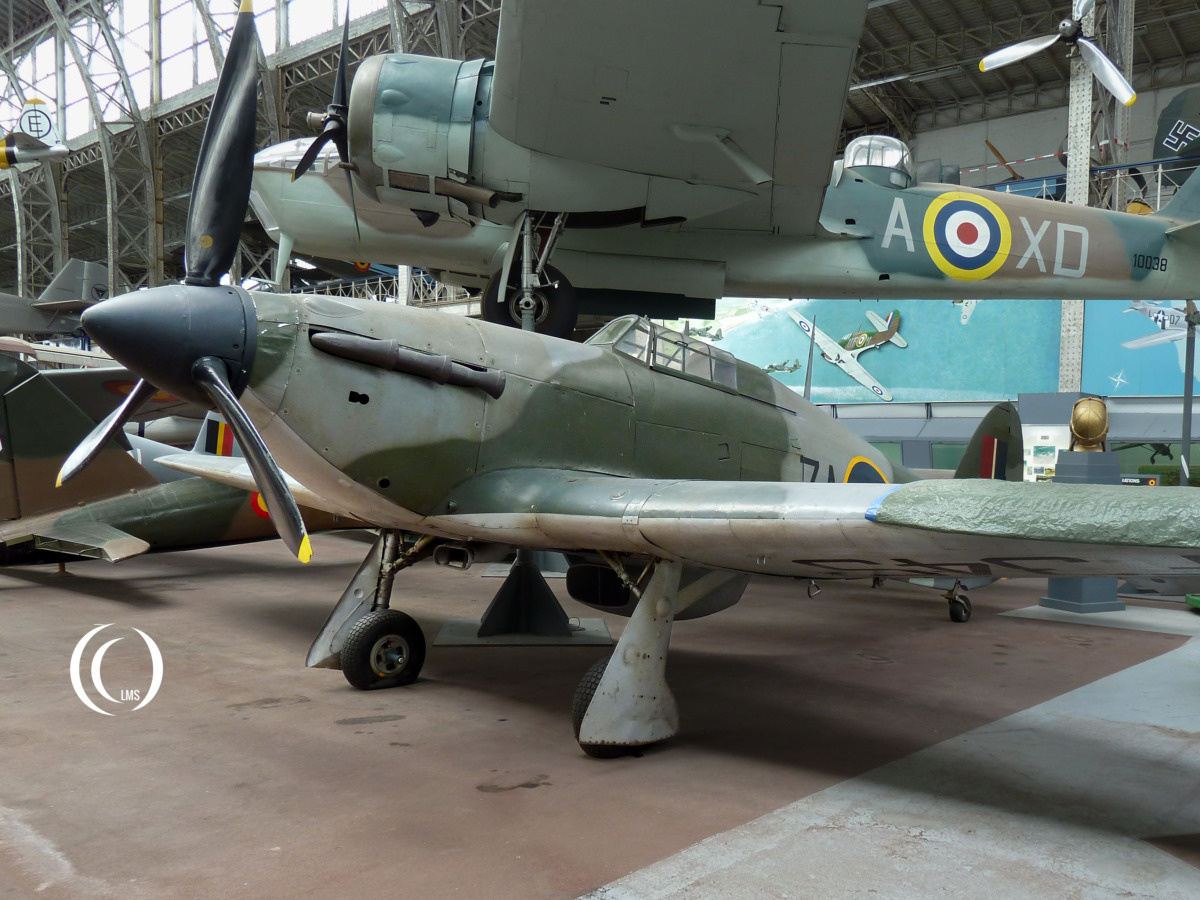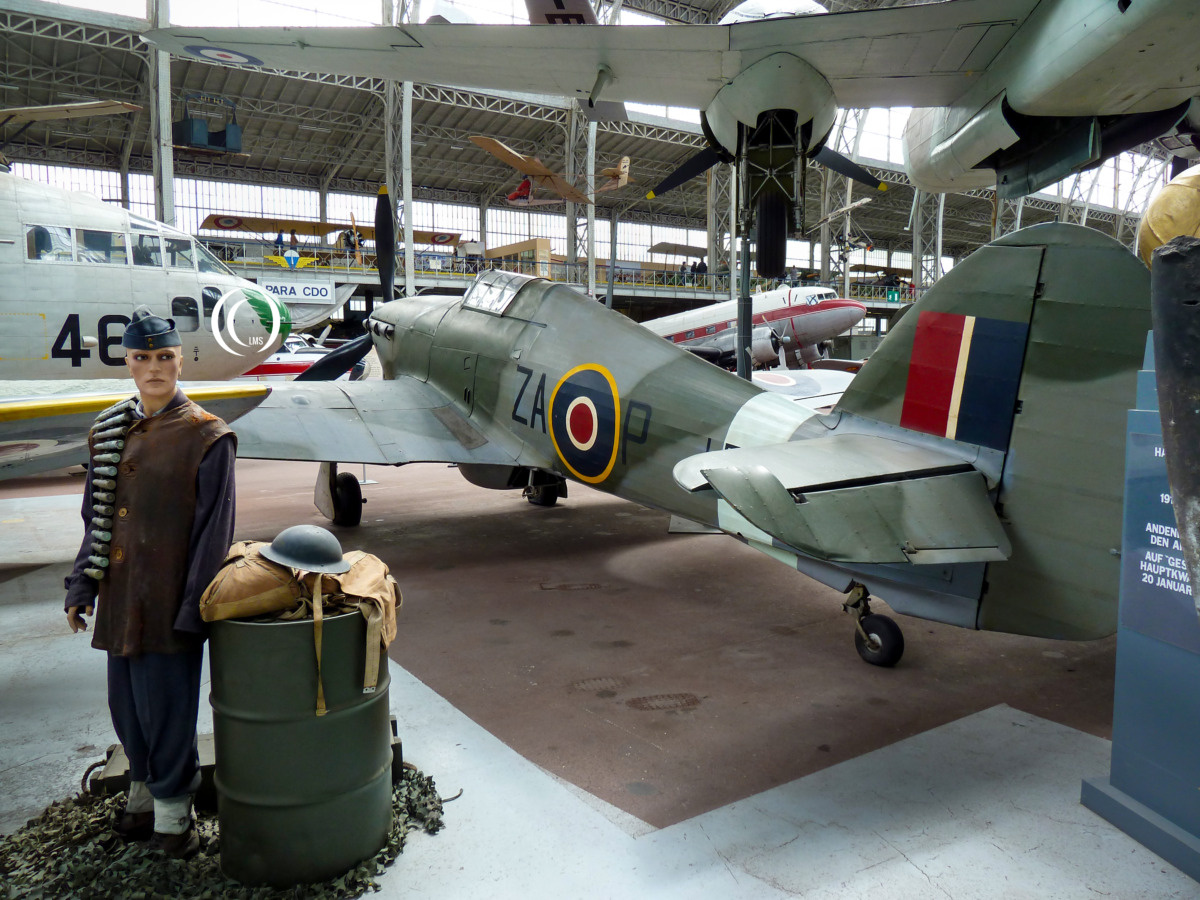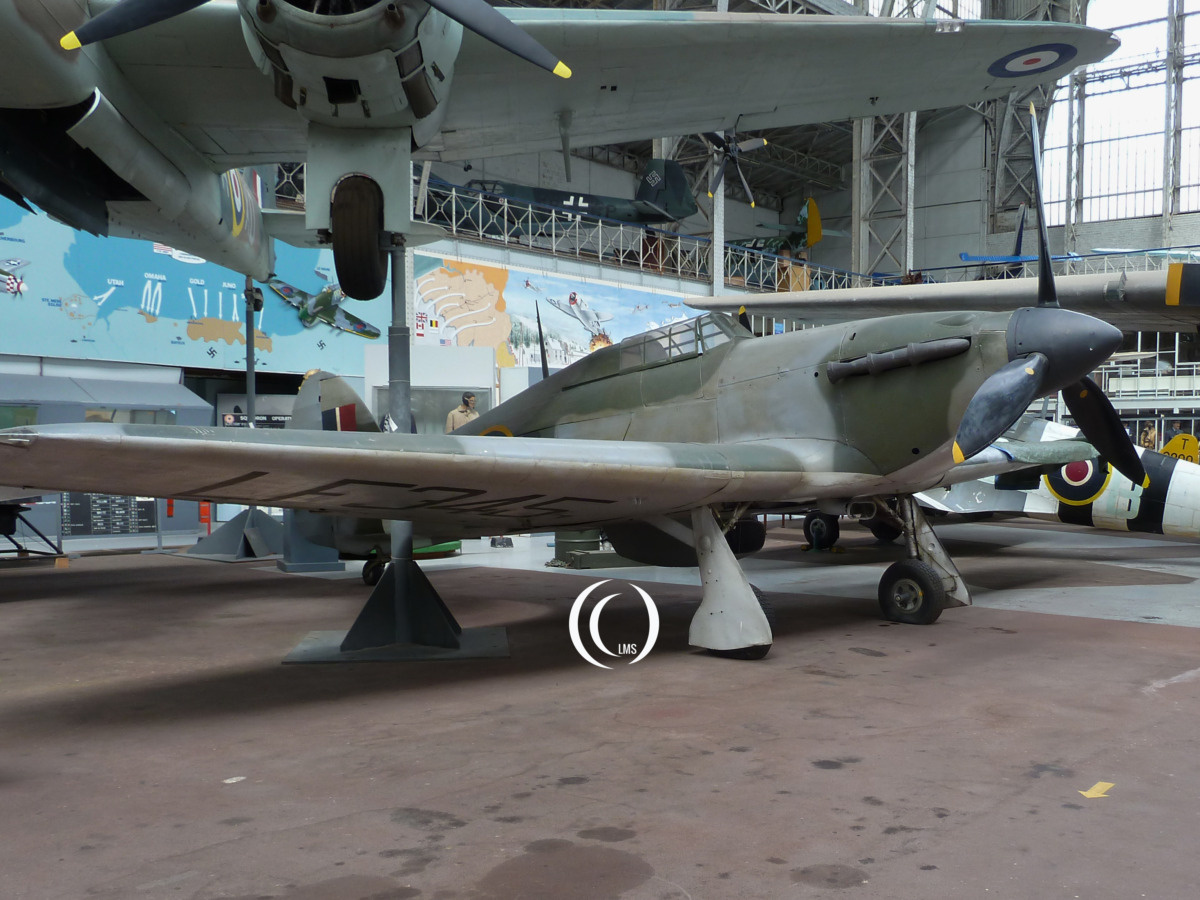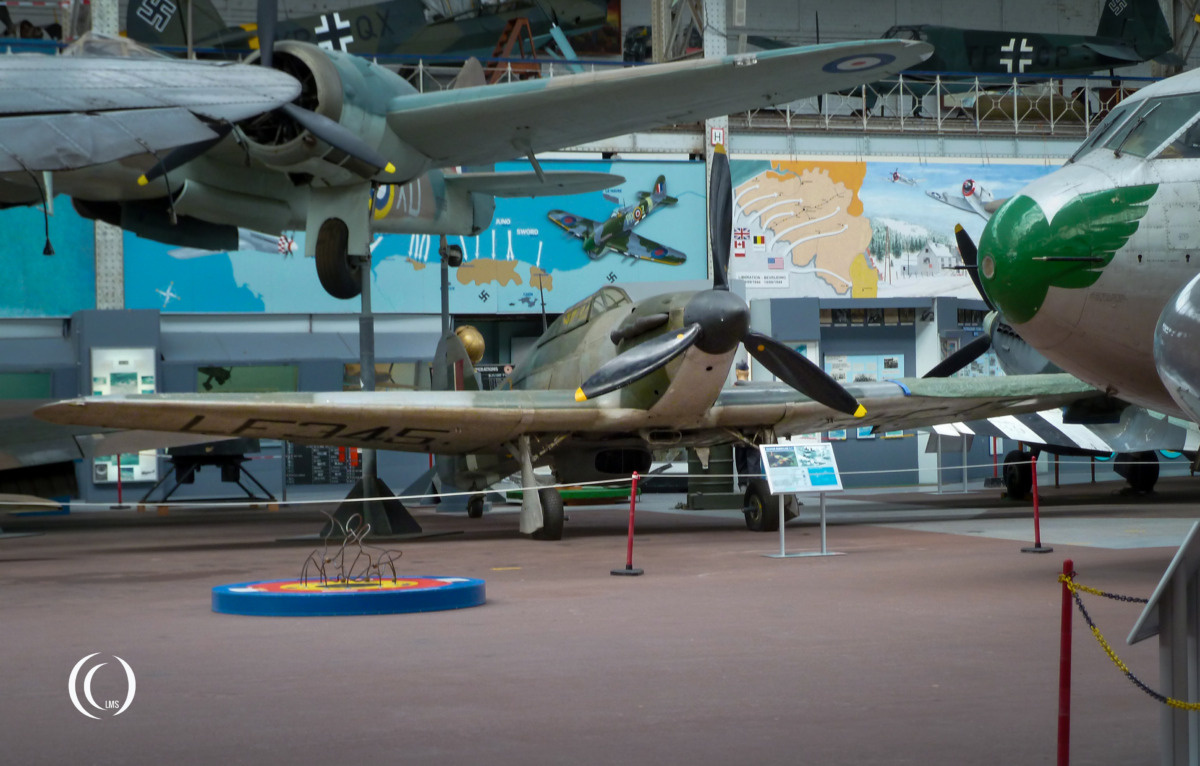The Hawker Hurricane is a British single-seat fighter aircraft designed by Hawker Aircraft Ltd. for the RAF. Even though the Hurricane accounts for more than half of the losses of German Luftwaffe aircraft during the Battle of Britain, the fighter’s reputation is largely overshadowed by that of the faster Supermarine Spitfire.

Battle of Britain
The Hurricane entered service in the RAF at the end of 1937. Because conventional construction methods were used for manufacturing and maintenance, squadrons could perform maintenance and repairs without external support.
At the outbreak of the Second World War; in September 1939, the RAF had 18 Hurricane-equipped squadrons in service. These squadrons were heavily relied upon in the defense of Britain against the attacks of the German Luftwaffe, where it often found the Messerschmitt Bf 109 as its main adversary.
Hurribomber
Hurricane versions like this Mk. IIC were slower than the German Messerschmitt Bf 109. This changed the role of the Hurricane to ground-attack aircraft. While still performing as night-fighter or intruder, about three quarters of the later Mk. IIC series were fighter-bombers. This gave the Hurricane the nickname “Hurribomber”.
Hurricane Mk. IIC
This Hawker Hurricane Mk IIC is a RAF fighter (Serial: LF658) that entered service in March 1944. As production of the Mk. IIC ceased in July 1944 it is one of the last produced. In 1946 it was acquired for the Allied Flight Metropolitan Communications Squadron in Hendon as a communications aircraft and in 1947 transferred to Belgium where it was used as an instructional aircraft until 1951.
Today it belongs to the collection of the Royal Museum of the Armed Forces and Military History in Brussels.



